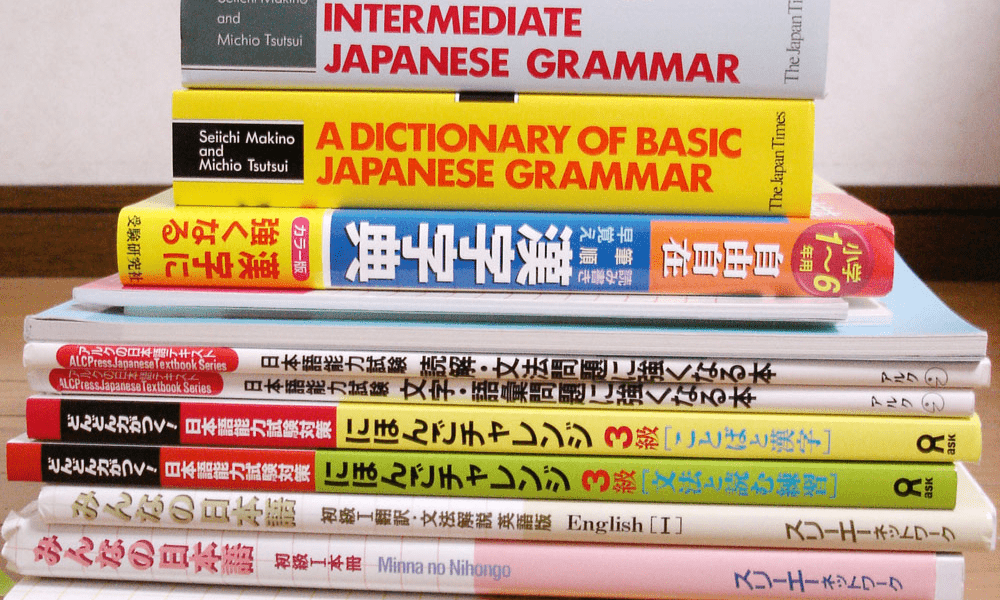Learn to be proficient in Japanese Language and speak with confidence!
Learning a new language is an exciting journey, and Japanese is no exception. It opens doors to a rich cultural landscape, offering deeper insights into Japan’s fascinating traditions and modern life. However, the path to mastering Japanese can be a challenging one considering its complex writing system and unique syntax. People living in Japan or who love Japanese culture often aim to speak and understand the language fluently.
One crucial aspect of language mastery is developing strong listening skills. Many learners struggle with the language isolate nature of Japanese. Most of the time the sounds and intonation are quite different from Western languages.
In this article, we’ll explore practical tips and tricks to enhance your Japanese listening abilities. If you’re aiming and invested to learn and enhance your Japanese language proficiency. These tips will assist in effectively understanding the language of Japan and foreign words in an enjoyable way.
Are you planning a trip to Japan? Don’t miss our comprehensive guide, tailored specifically for travelers like you! It’s packed with essential tips and insights to make your visit unforgettable. Check it out now!
Japanese Language Difficulty
Numerous learners question the complexity of the Japanese language, and the answer typically varies based on their linguistic background. For those used to Latin-based languages, Japanese presents a unique set of challenges.
Many people wonder if Japanese is a hard language to learn. The answer can depend on the languages spoken and your knowledge with native Japanese words. This ranking places it alongside other linguistically intricate languages like Arabic, Chinese, and Korean.
Explore our guide featuring easy-to-use words and phrases perfect for everyday conversations.

Learners usually wonder what makes the Japanese language hard to learn. A major factor is the Japanese writing systems. Unlike most languages with one alphabet, Japanese uses three scripts: Hiragana, Katakana, and Kanji. Making its grammar different from modern Japanese and other languages.
Hiragana and Katakana represent sounds, while Kanji uses thousands of Chinese characters. each with its own meaning and delivery, Navigating through these scripts requires patience and dedication.
Then there’s the sentence structure or syntax. Learners often make sentences differently in English compared to Japanese. In Japanese grammar, the verb usually comes at the end and you can leave out the subject if it’s clear from the context. Which adds nuances and layers of complexity for learners.
Despite these challenges, countless learners have successfully broken boundaries by mastering Japanese. Learning this language family can be not only possible but also a rewarding experience. We hope after reading this comprehensive guide you’ll be able to find that confidence to learn.
Visiting Japan soon? Make sure you check out our guide to the top 25 authentic food you must try!
Core Strategies for Learning Japanese

Avoiding Literal Translation
One of the key steps in learning Japanese effectively is to move away from the habit of literal translation. Instead of translating a Japanese word into your language, try linking it directly to a picture or idea. This method, known as direct association, helps you think in Japanese, speeding up your response time and understanding.
It also enables you to grasp the nuances and figurative expressions that don’t translate well word-for-word. Practicing this technique will make you more fluent and natural in speaking Japanese. This will help your flow from just recognizing words to truly understanding the language.
Planning to visit Japan soon? Get amazing deals with flight tickets from the USA to Japan!
Visualizing Language Contexts
Japanese is a language deeply rooted in its social and cultural context. To grasp its subtleties, especially the use of honorifics, visualizing different social scenarios can be incredibly helpful. For instance, imagine how you would converse with a friend versus a superior at work.
This mental practice helps you understand the appropriate language to use in varied situations. This is about more than just words; it’s about the respect and relationships they show.
This practice helps you grasp the indirect and polite communication style of Japanese people. Since the 20th century, the tradition with Japanese people values unspoken cues as much as the words spoken.
Leveraging Auditory and Visual Learning
A balanced approach to learning Japanese involves combining both auditory and visual methods. While listening skills are crucial, complementing them with reading and writing practice enriches your learning experience. Japanese scripts—Hiragana, Katakana, and Kanji—enhance your reading skills and help with delivery and word knowledge retention.
Listening to spoken Japanese and learning Kanji through various media helps you understand and use the language more easily.
This method helps you become fluent in Japanese by using both reading and listening skills. This combination ensures a well-rounded mastery of Japanese, allowing you to absorb the language both visually and aurally.
Tailoring Grammar and Knowledge
When learning Japanese, it’s essential to tailor your study of grammar and knowledge to your current level. Beginners should focus on basic sentence structures and essential words, gradually moving to more complex concepts as they progress.
This step-by-step approach prevents you from feeling overwhelmed and ensures that you build a solid foundation. Utilize resources and learning materials that match your proficiency, whether it’s beginner textbooks or advanced reading materials. Remember, every learner’s journey is different, so choose a path that best suits your pace and understanding.
Emphasizing Reading Aloud
An often-overlooked strategy in language learning is reading aloud. This practice is particularly beneficial in Japanese, as it helps in two key areas: delivery and auditory comprehension. Reading Japanese text aloud allows you to hear your own delivery, giving you the chance to adjust and improve.
It also reinforces your auditory memory, aiding in better recognition and understanding of spoken words. Include reading aloud in your regular studies, like reading textbook dialogues or passages from a Japanese novel. This active engagement with the language will significantly enhance your speaking and listening skills.
Basic Listening Practice Techniques

Active Listening
Active listening in Japanese goes beyond hearing words; it’s about deeply engaging with the language. Focus on the delivery from the tone, pitch, emotion and personal pronouns. Practice by listening to Japanese conversations either live or recorded and try to understand the content and expression.
Ask yourself questions about what you heard, summarize it in your mind, or even out loud. This method helps Learn Japanese Language and deepen your understanding of the language and improves your ability to communicate effectively in Japanese.
Watching Drama and Movies Without Subtitles
Immersing yourself in Japanese dramas and movies without subtitles is a fantastic way to enhance your listening skills. This approach forces you to rely on the spoken word and non-verbal cues to grasp the story.
Attempt to grasp common phrases and expressions, even if initial understanding is not complete. While doing so, you’ll gradually start recognizing patterns and expression. This will help you become familiar with how Japanese speakers use the language in real-life situations. It exposes you to the language’s natural flow and rhythm.
Audio Immersion
Listening to Japanese audio, like music or podcasts, helps you immerse in the language effectively which makes it easier to learn Japanese language. This includes the Tokyo dialect and Kanji characters. Listening to Japanese sounds in the background, similar to a high school language lab. Helps your brain become accustomed to the language’s sounds and delivery.
Interact with the content by repeating phrases, singing along, or summarizing what you hear. This consistent exposure not only improves your listening skills and delivery but also accelerates your learning process.
Advanced Listening Practice

Casual Talk Practice with Native Speakers
Engaging regularly in conversations with native Japanese speakers is invaluable for advancing your listening skills. This real-life practice provides the best insight into natural language use. This includes slang and expressions not found in textbooks. It also exposes you to a variety of accents and speaking styles, helping you become more adaptable in Japanese.
Making mistakes; is a natural part of the learning process. Each conversation is a learning opportunity, allowing you to gain confidence in your ability to comprehend and respond. You can find language exchange partners, join local Japanese speaking clubs, or even connect with native speakers online. The key is consistent practice and openness to learning from every interaction.
Discover must-visit festivals with cultural immersion in Japan that offer rich, casual conversation experiences.
Creating a Japanese-Speaking Environment at Work
If you have the opportunity, maximizing Japanese into your work environment can significantly boost your language proficiency. Using Japanese in a professional setting challenges involving more formal or technical knowledge.
This immersion experience can rapidly improve both your listening and speaking skills. Begin with easy tasks like changing your computer or phone’s language to Japanese or talking with Japanese-speaking colleagues. If your workplace doesn’t fully speak Japanese, suggest regular language meetings or a study group. This creates a practice-friendly environment and forms a supportive learning community, making it more fun and effective.
Tips for Improving Listening Skills
Focus on Accurate Delivery
Getting the delivery right in Japanese is key to improving your listening skills. Accurate word delivery helps you to recognize and understand words more easily when you hear them. A good way to practice is by listening closely to native speakers and trying to mimic their expressions.
Pay attention to the nuances of how they articulate words, the intonation, and the rhythm of their speech. You can use language learning apps, watch videos, or listen to audio recordings. Remember, the more you practice, the more familiar you become with the sounds of the language. This makes it easier to pick out words and phrases when listening.
Learning The Meaning and Context
Instead of looking up each new word in a dictionary, try to grasp its meaning from the context. This method, known as contextual learning, develops your intuitive understanding of the language and makes following conversations easier. It helps you think in Japanese, avoiding constant translation to your native language. You can also learn new words by observing their usage in real situations.
Starting with Simple Scenarios
Begin your listening practice with simple and familiar scenarios. Listening to conversations or audio in contexts you are already familiar with can significantly enhance your understanding. Start with topics you are interested in or situations you encounter daily.
For instance, listening to a dialogue in a café setting or a simple exchange between friends. These everyday situations use common language and simpler structures, making it easier for you to grasp the basics. As your skills improve, gradually move to more complex scenarios. This step-by-step approach will build your confidence and make the learning process more manageable and enjoyable.
Your Personal Journey to Mastering Japanese
Mastering and honing your listening skills is a rewarding journey filled with its own set of challenges. Remember, the key lies in consistent practice and patience. Embrace strategies like avoiding literal translations, visualizing casual contexts, and balancing auditory and visual learning. Engage in active listening, immerse yourself in Japanese media, and practice speaking with native speakers.
Learning a new and complex language like Japanese, can be tough. You might feel lost or overwhelmed by the fast pace and complexity of conversations. Learning a language so different from your own can seem like a huge challenge. But, this guide aims to give you the tools and confidence to overcome these challenges.
Language learning isn’t just about memorizing words and grammar; it’s about connecting with a new culture and expression. From basic phrases to complex dialogues, it is about more than talking – it’s learning about Japan’s rich culture and traditions.
Pay attention to delivery and expression, learn the context, and start with simple scenarios. Each step you take brings you closer to fluency. Keep going, stay motivated, and you’ll soon understand and enjoy the Japanese language more than ever. Continue learning and let your passion for the language lead you to mastering Japanese speaking and understanding!









